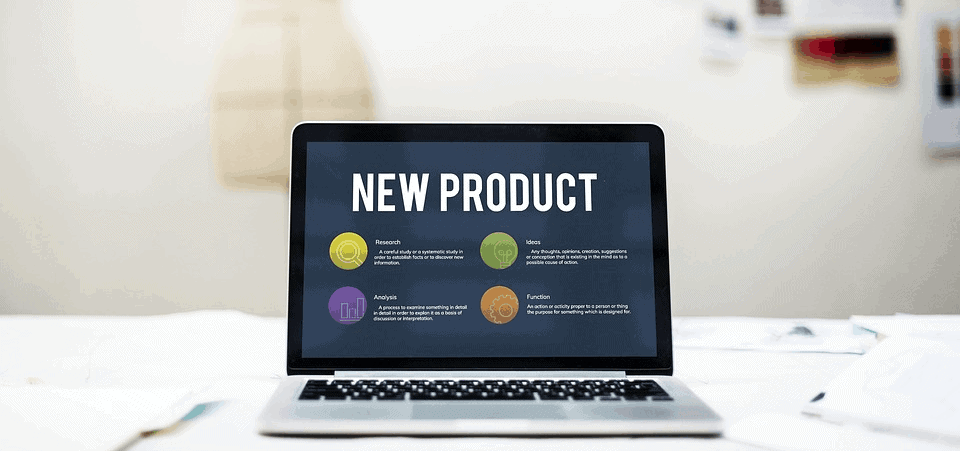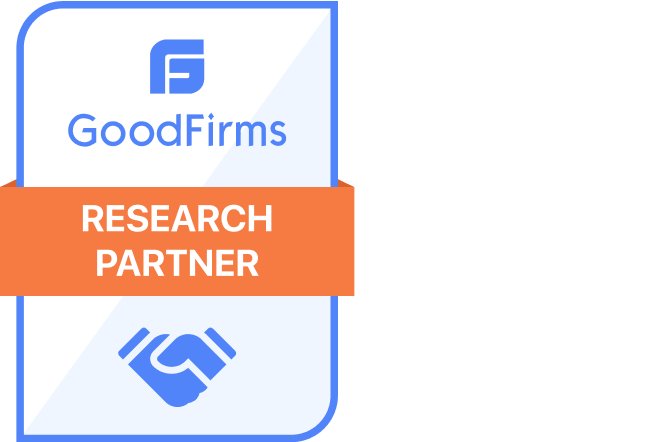![How Much Does It Cost to Build an MVP? [Complete Guide] - WPRiders Article](https://wpriders.com/wp-content/uploads/2019/05/1.png)
The easiest sport in the world.
Have you ever tried searching for ‘the world’s easiest sport’ on Google? Try it.
Are you back? Good.
You’ll find quite a few articles that feature running among the easiest and least challenging forms of physical activity in existence.
In fact, ask your friends the same question, and you may discover that they, too, feel the same way.
What sport could be simpler to learn and practice than running?
Actually, is there even anything to learn? Running is just something that people know how to do naturally.
You Don’t Know How to Run Correctly. Do You?
![How Much Does It Cost to Build an MVP? [Complete Guide] - WPRiders Article](https://wpriders.com/wp-content/uploads/2024/09/MVP-venn-diagram.png)
We all have a vision of what our products should be. But when it comes to building an MVP, it won’t be your vision alone that ends up defining your product. Real market needs and your budget will also have an essential role in shaping your MVP.
What do you think the market needs
You’ve probably done a lot of research trying to figure out what type of features would make your customers’ lives easier. And although you’ve managed to come up with a few excellent features, some of which the customers in your target market don’t even know they need just yet, you may have also gone a bit overboard with it. Most likely, your potential customers need more than they think they do, but less than you think they need. So, there’s only a partial overlap between what you think people need and what they actually need.
What your market actually needs
This category encompasses all the product features required to solve the customers’ problems. Here, we include both necessary and unnecessary features. An important point to make here is that, often, customers fail to recognize the type of features they need. And because they don’t know what they need, it will be your job to figure this one out.
What you can afford to build – What is the actual cost of building an MVP?
The reality is that you don’t have unlimited resources to invest in product development. No one does. I’m pretty sure that even Elon Musk and his team at SpaceX had to make some tough decisions during those 15 years they spent building the Crew Dragon spacecraft. So don’t lose heart! Out of all the features you’ve thought about implementing, some are definitely crucial while others, though nice to have, aren’t necessary. Right now, it’s time to focus on the essential elements, and leave the rest for later.
Your Minimum Viable Product
Your MVP is the simplest version of your product. It incorporates just the essential set of features that your product needs to become operable, on the one hand, and get consumers’ attention, on the other. One of the biggest challenges you’ll come across when building an MVP will be to determine which product features are essential.
But once you figure that out and your MVP is ready to hit the market, you’ll have yourself a powerful tool that you can use to learn just how impressed people are with your product. To gauge people’s level of interest, you can look at multiple metrics such as the volume of visits to your website, the number of downloads, or the number of sales that your MVP generates.
If It’s Not What You Thought It Was Going to Be, Then What Is Your MVP?
In the few minutes you’ve spent reading this article, you’ve found out, not only that your idea may not be as good as you imagined, but also that determining how good your idea really is may cost you anywhere between $2,000 to $80,000.
Confusing? Disheartening?
How will you even go about deciding what features your MVP should incorporate?
And how will you determine how much building an MVP should cost?
Don’t despair! You can figure it all out by devising a solid plan.
Think of it as an architectural plan.
You wouldn’t start building a house without one, would you?
Well, building a website is not that different. Sure, we’re talking about another type of structure; however, developing a website still requires creating a comprehensive architectural plan.
The architectural plan we use to design websites is called a Scope of Work. The purpose of this document is to offer you a detailed overview of your project. In other words, the Scope of Work will show you what you’re paying for and what you’re getting in exchange for your money.
To create a Scope of Work, we recommend having a Discovery meeting with your technical partner. Get together with your Project Manager and discuss all the details surrounding your product.
The Scope of Work is Your MVP.
A useful and comprehensive Scope of Work for an MVP should include the following elements:
- Project overview – a general description of your product;
- Project objectives – what are we trying to achieve here?
- Project non-objectives – what features are we deciding not to include in building the MVP?
- Sitemap – a list of all the pages on your site
- Page 1 – here, you should write a description and wireframe of what goes onto this page;
- Page 2 – same here;
- Roles – here, you should define user types; for example, if we’re talking about a marketplace, we will have: vendors, buyers, and admins;
- User stories for each role – here, we list all the capabilities or features that each type of user should be able to have; they go under the following format:
- “As a vendor, I want to be able to…” – for example: “As a vendor, I want to be able to create a vendor account;” or: “As a vendor, I want to be able to list my product on the website with the following information: name, price, category, quantity.“
Once you have your Scope of Work, you are next door to your MVP!
So, How Much Does It Cost to Build an MVP?
If you’re looking to build a custom platform from scratch, the recommended budget to get it done would be anywhere between $75,000 to $100,000.
Remember that, in this scenario, your developers will tailor every single feature on the platform to your unique needs.
But before you start stressing out about that intimidating sum of money, let me tell you that there is a way to lower the price dramatically. It’s nothing complicated, really. It’s just a simple trick that we’ve been using to help our customers reduce development costs.
And it all has to do with the MVP. We’ve been talking a lot about how building an MVP can save you money. Now, it’s time to actually show you how easy it is to cut project costs by getting an MVP first.
But let me tell you just how much money you can save. In our experience, building an MVP can take your costs down to under $20,000. That’s quite an achievement, isn’t it?
Let’s find out how!
To cut more than $50,000 off the project price, we recommend starting your development journey by setting up a Discovery Session.
The price of a Discovery Session is around $1,500 and it involves about 5-6 hours of conversation and research.
This $1,500 investment can save more than $50,000!
Here’s why: there are pre-built components, called plugins, that developers can use to offer you many of the features that you might want to have on your web platform.
Just by using those plugins, we can reduce the costs of custom development significantly.
But the only way to find out whether we can use any of those ready-made plugins to build your website is to discuss at length the key features you need on your platform and how you’d like them to work.
That’s what we do during the Discovery Session.
And we’ve seen that this tiny investment can save people tons of money later down the road, and save our team hours of effort. Discovery projects have basically allowed us to deliver high-quality projects faster and cheaper – a combination that most people think is impossible to achieve.
So, to recap, how much does it cost to build an MVP? Well, if you follow our recommendation, then the MVP will cost you:
- $1,500 for the Discovery session;
- Between $10,000 to $20,000 to launch the MVP.
This formula has worked very well for the companies we’ve worked with up to date. We’ve been using this strategy to build and launch over 50 MVPs.
When do I need an MVP? Do I need it at all?
Generally, businesses reach out to us whenever they’re looking to launch a new project or rebuild an old one.
Whether you’re a startup wanting to get your first product out the door or an established organization interested in revamping an existing business idea, you can still benefit immensely from getting an MVP.
If you’re just starting out and you want to develop an entirely new product, the best way to go about it is to begin by creating an MVP and only go for a full build in the second or third iteration. In agile software development, each iteration reenacts the complete product creation cycle, from planning all the way to testing. The goal of an iteration is to create a new version of a product by adding more functionality to the previous build.
It’s better to improve functionality incrementally rather than try to do too much too fast. In the beginning, you won’t really know what works and what doesn’t, what features to implement, and what other features to drop. Only by continually working and perfecting your product will you be able to get the outcome you envisioned.
I am still not sure how to go about it and want to learn more
We’ve been talking quite a bit about the minimum viable product, but we never got to talk about viability.
We understand what the minimum is about, but what is it that makes a product viable?
According to the dictionary, something is viable if it works successfully.
So, to begin with, a viable product should be functional. It should work as intended.
Now, to be able to create a working product, you have to have the motivation, the resources, and the abilities to do it.
But that’s not all there is to it
We have to remember that we’re not just talking about creating any item in general. We’re talking about creating a product, so an item destined for sale. And for a product to be viable, it also needs to sell.
In other words, consumers should want to buy it. But for people to want to buy a product, generally speaking, that product should satisfy a need or solve a problem.
Finally, the money you’re investing in building the product shouldn’t exceed the amount of money that people are willing to spend to solve the problem your product promises to fix.
So, here we go. To determine whether your product is viable, ask yourself these questions:
- What is my motivation for wanting to build this product? Am I qualified to do it? Do I have the resources and the know-how to develop a functional product?
- What problem does my product solve, or what need does it fulfill?
- Who are the people who deal with the problem that I’m trying to address?
- What type of solution would these people prefer?
- Are consumers willing to pay for a solution like the one I’m offering?
Every new entrepreneur should consider these points. And here’s the thing: some of the answers to the questions above may not be the kind of things you’d like to hear. But that’s exactly why it’s crucial to have an honest conversation with yourself before you get started. Better to face the facts and change the course when there’s still time rather than invest in a losing idea. Download our free ebook 5 ways to test if customers will pay for the product you’re building and learn more about asking yourself the right questions before getting started. Or grab it here below.
Key takeaways – The Cost of Building an MVP
Entrepreneurs can fail, even after spending months and sometimes years developing and improving their final product.
Here are the most common reasons why that happens:
- they don’t test their ideas;
- they don’t invest in real communication with their potential customers;
- they’re focused on building the ideal version of their product just the way they’ve imagined it and fail to see what type of product consumers would actually like to see;
- they don’t understand people’s wants and needs;
- they base their assumptions on gut feeling rather than facts and research;
- The best way to avoid spending all your time and money on a losing idea is to build an MVP – a self-standing product that incorporates just enough features to satisfy your first customers.
- By building a basic version of your product and getting out there, you can start bringing in some cash right away. At the same time, your customers will offer you the feedback you need to understand what features to add, improve, or drop.
- The costs associated with building an MVP can vary greatly. They can go anywhere from $2,000 to $80,000 and beyond.
- To get an exact price, you have to make sure that your Project Manager understands what type of project you want to build. To this avail, it’s best to create Scope of Work – a detailed document describing every element you want to include in your project.
- The more customized features you need, the more your project is going to cost. Sit down with your Project Manager and work together on determining which parts of your project really require customization. Using ready-made plugins can save you up to $50,000.
- If you want to start a new project from scratch and you want to make sure that your product sells, you need an MVP. And we’re here to make it happen.






